Grassland

- Details
- Category: Grassland
Envy, another recent addition to the systemic grassland herbicide range, adds an extra option in the control of weeds in reseeded pasture.
Containing the two potent active ingredients fluroxypyr and florasulam, it is effective on the same range of weeds as PastorTrio, with the exception of thistles.
It should be applied to reseeds at one litre/ha in 200 litres of water from the third leaf visible stage of the grass. Where chickweed or docks are large, the application rate should be increased to 1.5l/ha.
As it works well in cooler conditions, Envy can be applied up to 30 November. This makes it an ideal post-emergence herbicide for autumn-sown reseeds.
|
Envy fact sheet
|
Autumn reseeds now need urgent care
Pastures reseeded last August and September are now approaching the stage of urgent weed control. In many of these reseeds, there was not an opportunity to apply a post-emergent weed spray. This has resulted in heavy infestations of chickweed. Seedling docks are also a widespread problem. If these weeds are not controlled over the coming weeks, they will continue to flourish and will smother out the grass. Other weeds such as thistles and buttercups will germinate, leading to a highly unproductive sward.
Applying either Envy, or (where thistles are among the target weeds) PastorTrio, as soon as possible will kill these weeds and enable the perennial grasses to recover.
Merits of over-sowing clover
As clover is susceptible to PastorTrio and Envy and other systemic herbicides that kill broad-leaved weeds, a growing number of farmers are now excluding clover from the original mixture. They then apply a post-emergent herbicide and over-sow the clover into a clean sward.
The technique, pioneered by Dr James Humphreys of Teagasc Moorepark, involves mixing the clover at 5kg/ha with PK fertiliser and spreading at 2.5 bags/ha in two runs at right angles to each other.
The use of a quad bike fitted with a slug pellet applicator can also be an effective method of broadcasting the clover seed.
Around 3,000 gallons/acre of fairly watery slurry should be applied after broadcasting the clover seed. This will help to wash in the seed and seal the ground thereby lowering moisture loss.
When using PastorTrio or Envy, the over-sowing can be done three months after the herbicide is applied.
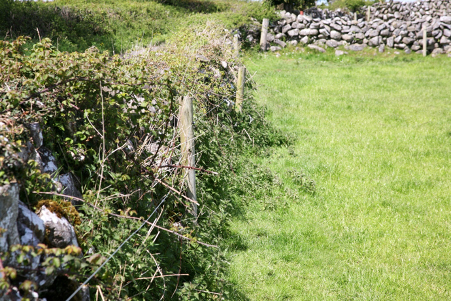
- Details
- Category: Grassland
 |
| Grazon Pro is fast acting and offers high levels of long term broad control. |
Where weeds such as nettles, thistles, briars and docks are present at fences, ditches and hedges, there is still an opportunity to get rid of them with a spot treatment of Grazon Pro.
It is a broad-spectrum herbicide, proven highly successful on grassland weeds and has been tried and tested over the last number of years by Irish farmers.
Manufactured by Corteva Agriscience and distributed on the Irish market by Whelehan Crop Protection, Grazon Pro contains two powerful root killing ingredients, triclopyr and clopyralid.
According to technical manager with Whelehan Crop Protection, Chris Maughan, no other product has a higher concentration of these two active ingredients.
“ Grazon Pro is fast acting, offers high levels of long-term control and is excellent value for money. As well as nettles, thistles, docks and briars, it is also highly effective on buttercups, gorse cow parsley and buck thistles, which are very prevalent under fencelines this year,” said Chris.
He continues, “Buck thistles are a bi-annual plant meaning it grows as a rosette in the first year and then it grows upright the following year and produces a seedhead. Therefore, the thistle that will produce seeds next year are present this autumn. Target this with Grazon Pro now to eliminate the problem next year.”
WATCH: Have questions on application and timing? In the video below, Chris Maughan outlines how to get the most from your application of Grazon Pro.
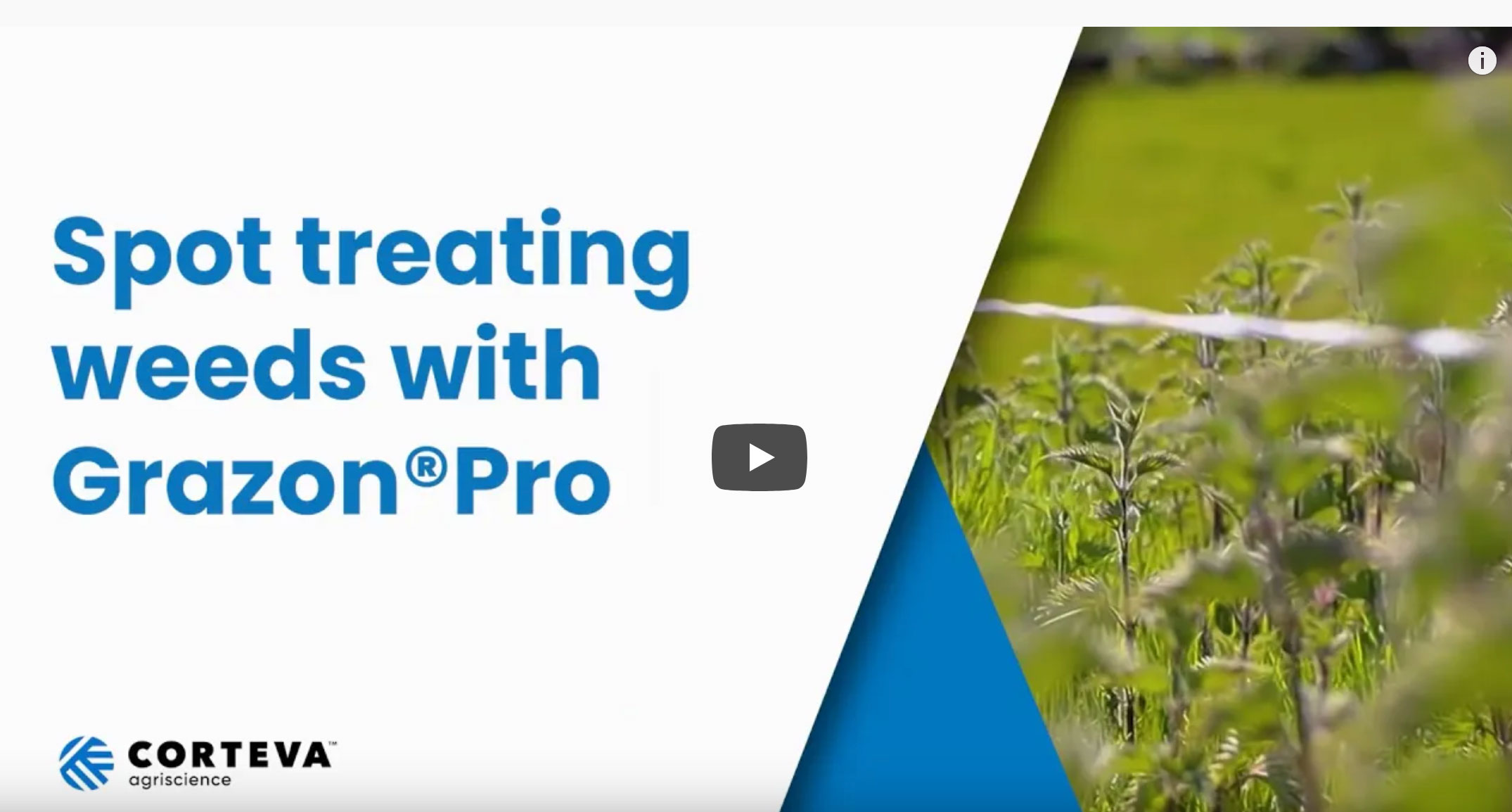 |
Autumn Thistle Control
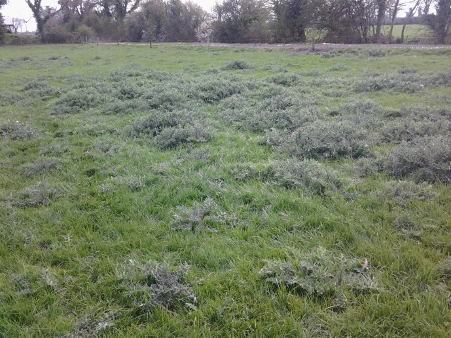 Where thistles were not controlled earlier in the season, there is an opportunity to treat them with a late-August/September application of Thistlex, the specialist thistle herbicide.
Where thistles were not controlled earlier in the season, there is an opportunity to treat them with a late-August/September application of Thistlex, the specialist thistle herbicide.
Another Corteva Agriscience herbicide, it contains the active ingredients triclopyr and clopyralid, which are absorbed right down to the roots of the thistles.
For best control, thistles should be actively growing, have four to 10 leaves, be 15-25cm high and before a seed head appears.
Thistle-infested swards that were recently cut for hay should now be at the right stage for effective treatment with Thistlex.
Apply Thistlex at 1l/la in a minimum of 200l water and keep animals off grass for seven days after spraying. Thistlex gives up to 85% control for 12 months after application.
Autumn Dock Control
“There is still plenty of time to control docks in grazing pastures. Eliminating docks this autumn will allow grassland to rejuvenate and reach its full potential next spring with a weed free sward,” said Chris.
Where second cut silage has been taken, these paddocks will now be at an ideal stage for spraying docks (rosette stage and 15-25cm high or across). With more silage ground coming back into the grazing rotation, this allows the rotation length to be extended.
When it comes to herbicide choice, there is nothing to beat the specialist product Doxstar Pro. Containing two chemicals, triclopyr and fluroxypyr, it ensures the most effective kill of the dock root system. It is also highly effective on chickweed and dandelions. Unlike dicamba-based products, there is no affect to grass growth.
Use at a rate of 2.0lt/ha as a single dose or 1.0lt/ha as a split dose, first in autumn time and repeat in the spring with an additional dose of 1.0lt/ha. This helps to kill out any plant that may have regrown from an old taproot present at the time.
As with all systemic herbicides, keep animals off pasture for seven days after spraying.
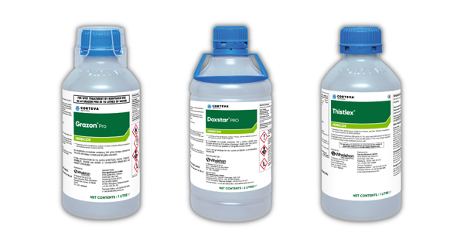 |
For more information on the wide range of grassland weed solutions from Whelehan Crop Protection, |
.
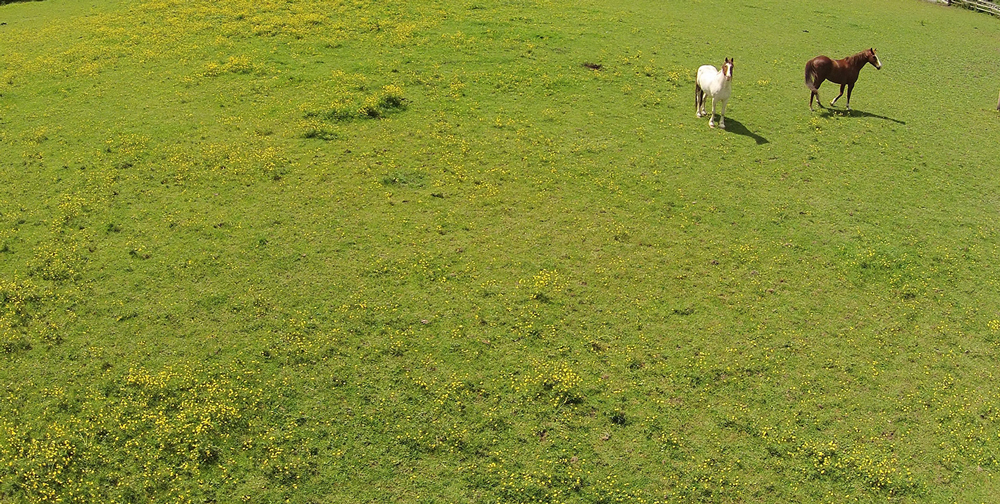
- Details
- Category: Grassland
Envy, the grassland herbicide launched three years ago, has added a new dimension to weed control in equine paddocks.
Manufactured by Corteva Agriscience, it contains two powerful ingredients – the tried and tested ingredient fluroxypyr and the brand new active ingredient, florasulam. The mix of these potent chemicals with two different modes of action ensures a very wide spectrum of weed control in grassland.
Envy is powerful on buttercups, dandelions, plantains, daisies, docks and chickweed in grazing paddocks, hay and silage swards. As there are no issues with residues in manure, it is particularly suited to horse paddocks.

“Spraying weed-infested pastures with Envy over the coming weeks will pay handsomely and will ensure more nutritious and more productive paddocks,” said Chris Maughan, technical manager with Whelehan Crop Protection which distributes the product on the Irish market.
Achieving Best Control
Best control is achieved by spraying when weeds are actively growing and before they reach the flowering stage.
“With docks, best results are got from spraying when they are 15-25cm high and before a seed head begins to emerge.
“While good results can be achieved by spraying buttercups at the flowering stage, very best control is got by spraying before they flower,” advised Chris Maughan.
He said that if weeds are gone beyond the ideal stage for spraying, it is best to top the paddock and apply Envy after around three weeks regrowth when the weeds have regrown to the ideal stage for an effective kill.
Envy should be applied to grazing paddocks at two litres/ha in a minimum of 200 litres of water. Animals should be kept off paddocks for seven days after spraying.
PastorTrio widens the options
PastorTrio, another recent addition to the Corteva Agriscience range of systemic herbicides, also provides excellent control of weeds in horse paddocks.
As well as containing fluroxypyr and florasulam, the two ingredients found in Envy, PastorTrio also contains florasulam.
 It is powerful on the same range of weeds as Envy and has the added advantage of killing thistles. Therefore, when thistles are among the weeds in a paddock, PastorTrio should be the herbicide of choice.
It is powerful on the same range of weeds as Envy and has the added advantage of killing thistles. Therefore, when thistles are among the weeds in a paddock, PastorTrio should be the herbicide of choice.
As with Envy, best results from PastorTrio are achieved by spraying when weeds are actively growing and have not reached the flowering stage. The recommended application rate to grazing paddocks is two litres/ha in a minimum of 200 litres of water. Animals should be kept off the pasture for seven days after spraying.
Tailor-made for Reseeded Pastures
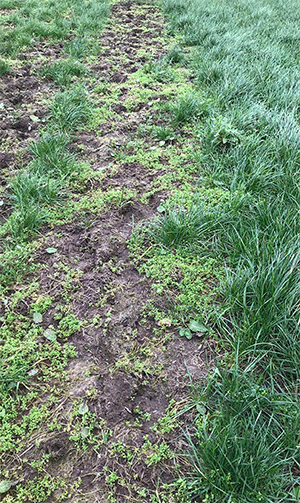
Both Envy and PastorTrio are tailor-made for the control of weeds in reseeded pastures. Chickweed and seedling docks are among the major weed problems in new reseeds. Envy and PastorTrio are highly effective on both weeds.
“Many pastures that were reseeded last autumn did not get a post-emergent weed killer. Some are now riddled with weeds with large patches of grass smothered out. Spraying with PastorTrio or Envy will kill the weeds and enable the perennial grasses to recover,” said Chris Maughan.
He said that weed control will also become an urgent issue in pastures that are currently being reseeded.
“A post-emergent application of Envy or PastorTrio, depending on the weeds, will result in a weed-free sward and allow the new grass to tiller out, ensuring the sward can reach its full potential.
“Both herbicides can be applied from the third leaf visible stage of the grass. The recommended application rate on new reseeds is one litre/ha in 200 litres of water.
“As Envy works well in cooler conditions, it can be applied up to 30 November. This makes it an ideal post-emergent herbicide for autumn-sown reseeds.”
Over-sowing Clover
As Envy, PastorTrio and other systemic herbicides that kill broad-leaved weeds also kill clover, a growing number of farmers now omit clover from the original seed mix.
They then spray the new sward and over-sow the clover into a clean sward using a technique developed by Teagasc Moorepark.
Clover can be over-sown three months after the sward is sprayed with Envy or PastorTrio.
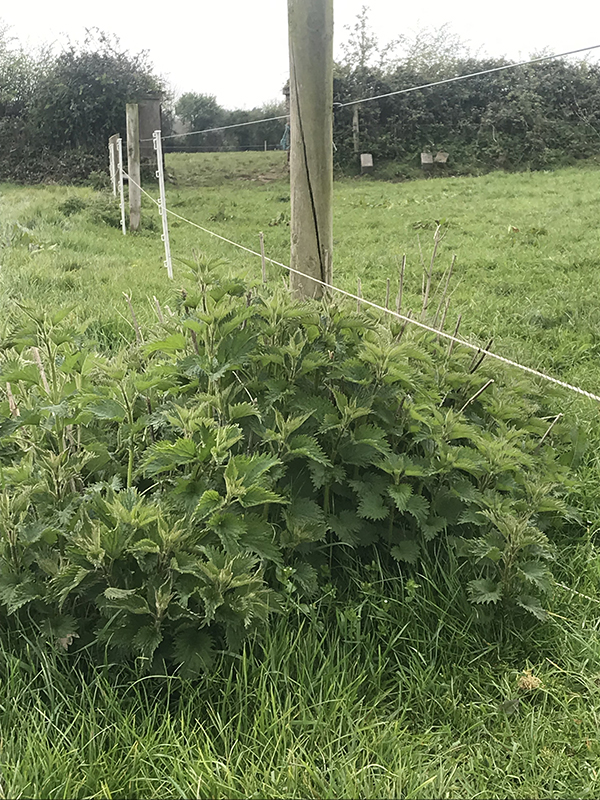 GrazonPro - the perfect spot treatment for weeds
GrazonPro - the perfect spot treatment for weeds
For spot treating nettles and other troublesome weeds at railings, ditches and hedges, GrazonPro is the perfect product.
Containing two powerful root killing ingredients – triclopyr and clopyralid – it is powerful on a wide range of weeds including nettles, thistles, docks, buttercups, brambles, gorse, cow parsley and hogweed.
It should be applied at a rate of 60 ml in 10 litres of water using a conventional knapsack sprayer, a quadbike sprayer or a suitable lance on a tractor mounted sprayer. Keep animals off treated areas for seven days.
GrazonPro is also an ideal spot treatment where weed infestations across paddocks are 5% or less. As with Envy and PastorTrio, best control is achieved where weeds are sprayed before the flowering stage.

- Details
- Category: Grassland
Envy is the perfect herbicide for weeds such as buttercups and dandelions in horse paddocks.
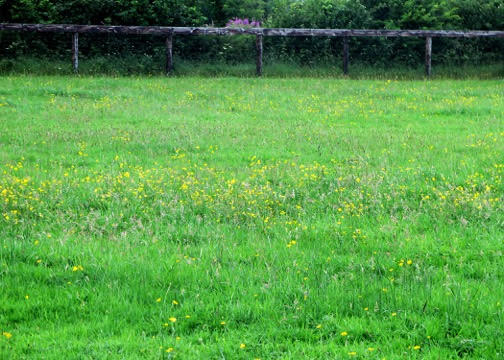 Spraying weed-infested paddocks with an effective herbicide over the coming weeks will pay handsomely in clean, productive swards for the rest of the season and beyond.
Spraying weed-infested paddocks with an effective herbicide over the coming weeks will pay handsomely in clean, productive swards for the rest of the season and beyond.
Envy, the grassland herbicide launched in recent years, has added a new dimension to weed control in equine paddocks.
It contains two powerful ingredients – fluroxypyr and florasulam. The mix of these potent chemicals with two different modes of action ensures a wide spectrum of weed control.
It is powerful on buttercups, dandelions, plantains, daisies, docks and chickweed and, as there are no issues with residues in manure, it is particularly suited to horse paddocks.
Chris Maughan, technical manager with Whelehan Crop Protection, which distributes Envy on the Irish market, advised that best control is achieved by spraying when weeds are actively growing and before they reach the flowering stage.
“With docks, best results are got from spraying when they are 15-25cm high and before a seed head begins to emerge.
“While good results can be achieved by spraying buttercups at the flowering stage, very best control is got by spraying before they flower.
“As growing conditions now begin to improve, many weed-infested pastures should be reaching the ideal time for spraying from around mid-May onwards. Paddocks can be grazed with horses and other animals seven days after Envy is applied,” said Chris Maughan.
Envy Ideal for Silage and Hay Swards
Envy is also ideal for silage and hay swards. Spraying before silage or hay is cut is by far the best option.
“Where weeds are a problem in silage or hay swards, the ideal time to spray them is two to four weeks after fertiliser is applied.
“Weeds should then be actively growing and be at the right stage for an effective kill. It is important to leave an interval of at least three weeks between spraying and cutting the crop.
“This ensures that the chemicals get translocated right down to the root system of the weeds, which is vital for long-term control,” advised Chris Maughan.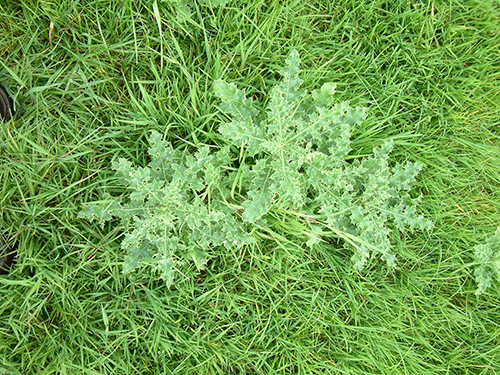
For best control with herbicides such as PastorTrio and Thistlex, thistles should be sprayed when they have four to 10 leaves and be before flowering.
Advice on Controlling Thistles
Where thistles are among the weeds population in grazing or silage/hay swards, Pastor Trio should be the herbicide of choice.
It contains three active ingredients – florasulam, fluroxypyr and clopyralid, a combination which ensures a broad spectrum of weed control. Pastor Trio is effective on the same range of weeds as Envy and is also powerful on thistles.
Where thistles are the sole weed in grazing or silage/hay swards, which is often the case, the specialist thistle herbicide Thistlex should be used.
Best control is achieved from spraying when thistles are actively growing, have four to ten leaves and are 15-25cm high.
As with Envy, when using either Pastor Trio or Thistlex, keep animals off grazing pasture for seven days after grazing and leave at least three weeks between spraying and cutting silage or hay swards. 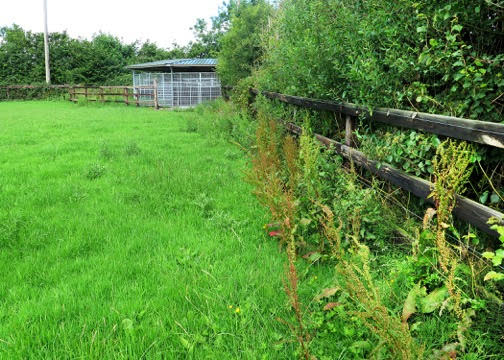
GrazonPro is ideal for spot spraying a wide range of weeds at fences, railings and field boundaries.
GrazonPro is the perfect spot treatment
For spot treating thistles, nettles, briars and other troublesome weeds at railings, ditches and hedges, GrazonPro is the perfect product.
Containing two powerful root killing ingredients – triclopyr and clopyralid – it is powerful on a wide range of weeds including nettles, thistles, briars, docks, buttercups, gorse, cow parsley and hogweed.
It should be applied at a rate of 60 ml in 10 litres of water using a conventional knapsack sprayer, a quadbike sprayer or a suitable lance on a tractor mounted sprayer. Keep animals off treated areas for seven days.
GrazonPro is also an ideal spot treatment where weed infestations across paddocks are 5% or less. As with the other systemic herbicides, best control is achieved where weeds are sprayed before the flowering stage.
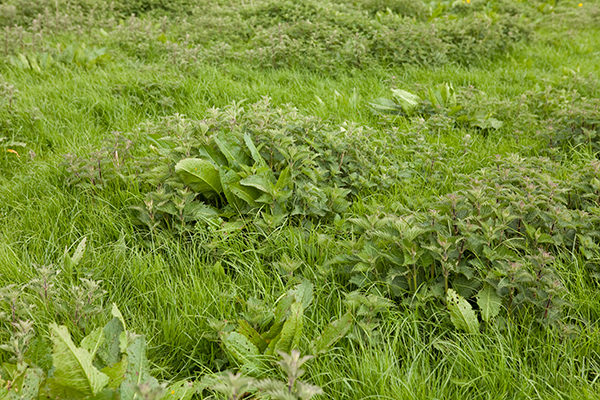
- Details
- Category: Grassland
Forefront T is the ideal herbicide for controlling a combination of weeds such as nettles and docks in grazing pastures.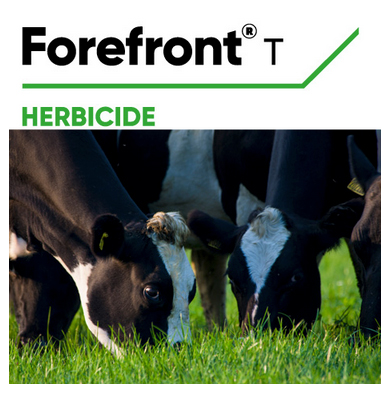
Choosing the right herbicide is the key to effective control of weeds in grazing pastures. Spraying at the right time in order to ensure the most effective kill of the weeds present is another critical consideration.
Where there is a combination of weeds such as docks, thistles, chickweed, dandelions and buttercups, it is important to use a broad spectrum systemic herbicide.
The herbicide Forefront T is the gold standard in broad spectrum weed control in grazing pastures and has become the product of choice for a growing number of farmers.
Manufacured by Corteva Agriscience, it contains two chemicals, aminopyralid and triclopyr. This powerful combination makes it the perfect choice for a wide range of weeds, including docks, thistles, nettles, buttercups, chickweed and dandelions. It is also ideal for ragwort.
As with all systemic herbicides, best results from Forefront T are achieved by spraying when weeds are actively growing and are at the right stage for a good kill of the root system.
- Docks should be 15-25cm high or wide and before a seed head begins to show.
- Thistles should have four to 10 leaves and be 15-25cm high and before flowering.
- Nettles should be sprayed before they flower.
If weeds are gone beyond these stages, it is best to top them and spray with Forefront T after about three weeks regrowth when they should be at the right stage for an effective kill.
Apply Forefront T as a single application at two litres/ha in a minimum 200 litres. Keep stock off the pasture for seven days after spraying.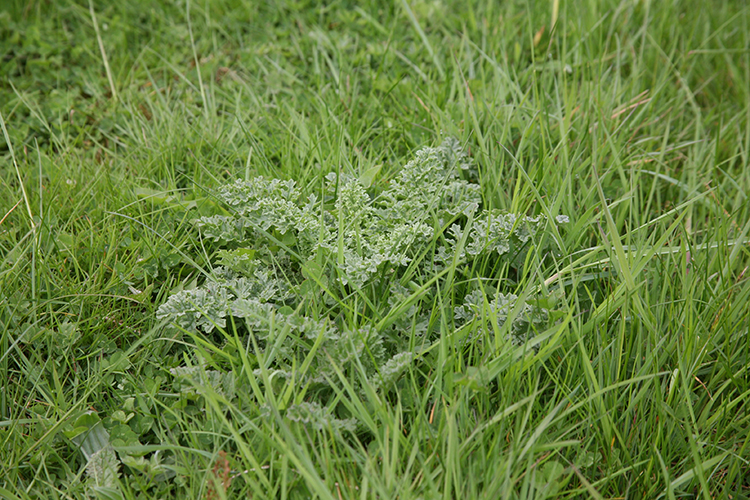
Apply Forefront T when ragwort is at the rosette stage and during a period of active growth, with temperature above 10°C
Forefront T perfect for ragwort
Forefront T is the perfect herbicide for controlling the noxious weed ragwort, which can be lethal to livestock.
Apply Forefront T when the ragwort is in the rosette stage and during a period of active growth with warm temperatures (above 10°C).
In grazing paddock systems, timing of the spray can be difficult to get right. Where ragwort is the only weed been targeted, spraying can occur when animals are removed from the paddocks as the rosettes would still be intact.
This allows at least three to four weeks before animals are back in to graze, which in a lot of cases would be adequate time for the plant to die away completely.
However, where the plant starts to produce a stem, it could take up to eight weeks after spraying for it to disappear.
In this situation, spraying in late autumn when pastures are being closed for the winter can work very well, provided there still is growth and temperatures are above 10°C.
For most effective control, thistles should have four to ten leaves, be 15cm to 25cm high and before a seed head appears when spraying with herbicides such as Thistlex, Forefront T and Pastor Trio.
Advice on killing thistles
Thistles play havoc with grass yields and have a huge impact on animal performance. They are also an animal health risk, spreading diseases such as orf, pink eye and mastitis.
Research has shown that animals leave 30cm ungrazed around each thistle plant. Fifty thistles per 20 sq metres, which is very common in thistle-infested swards, can mean a drop of 50% in grass dry matter yield.
Creeping thistle seeds can survive in soil for 21 years. The roots of one creeping thistle can grow to cover five sq metres in one year and up to 80 sq metres in two years. The weight of the underground creeping thistle root system can be up to 2.5 tonnes tonne/ha.
In its second year, a spear thistle can be over a metre in diameter before flowering. One flower head produces up to 400 seed heads, each of which can produce between 4,000 and 8,000 seeds. The seeds can remain viable for at least three years.
The use of a systemic herbicide is the only effective to kill the thistle root system. MCPA-based products have very little impact on the root system. While killing the foliage of the thistle, they merely act as a ‘chemical topper’, with the thistles re-emerging the following season.
Where thistles are among the range of weeds in a grazing pasture, Forefront T should be the product of choice.
Thistlex
Where thistles are the sole or major weed in a sward, use Thistlex, the specialist thistles herbicide. It contains the active ingredients triclopyr and clopyralid, which are absorbed right down to the roots of the thistles.
As with Forefront T, thistles should be actively growing, have four to 10 leaves, be 15-25cm high and before a seed head appears.
If they have gone beyond this stage, it is best to top them and spray with Thistlex when they have regrown to the correct stage.
Silage/Hay Swards
In silage or hay swards that are not due to be cut for the next three to four weeks, there is still time to spray thistles. Controlling them before the crop is cut will boost yield, quality and palatability of the winter feed and will also ensure a clean, productive sward for subsequent grazing.
If thistles are the major weed in a silage/hay sward, using Thistlex is the most cost-effective option. If other weeds are also present, Pastor Trio should be the product of choice.
As well as thistles, it is also powerful on a range of other weeds, including common chickweed, mouse-eared chickweed, docks, buttercups, dandelions, daisies and plantain.
Whichever systemic herbicide is being used, it is important to leave at least three weeks between spraying and cutting the crop in order for the chemicals to be absorbed right down to the root system of the weeds.
Apply Thistlex at one litre/ha. Apply Pastor Trio at two litres/ha. Use a minimum of 200l water/ha. Keep animals off pasture for seven days after spraying.
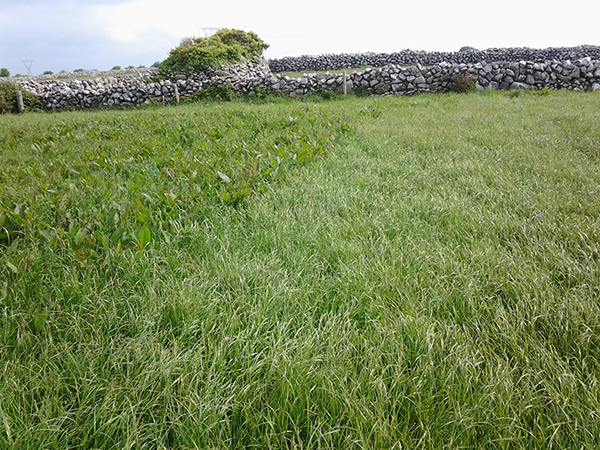
The power of Doxstar Pro can be seen from this picture. The section on the right was completely free of docks about four weeks after spraying. The section on the left was not sprayed and is heavily infested with docks.
Control docks after silage is cut
Docks are a perennial problem in silage swards and grazing pastures and have a devastating effect on dry matter yield and forage quality.
The best option for controlling docks in silage swards is by spraying with Doxstar Pro, the specialist docks herbicide, before the silage is cut.
It contains two powerful chemicals, triclopyr and fluroxypyr, ensuring the most effective kill of the dock root system. And as with Forefront T, Thistlex and Pastor Trio, it does not cause any check to grass growth.
Where there was not an opportunity to spray before silage-cutting, every effort should be made to spray the aftergrass, thereby ensuring a big increase in grass output and animal performance for the rest of the year and beyond.
Docks should be at the ideal stage for effective treatment with DoxstarPro three to four weeks after silage is cut.
It should be applied at a rate of two litres/ha as a single application or two applications of one litre/ha six to 12 months apart.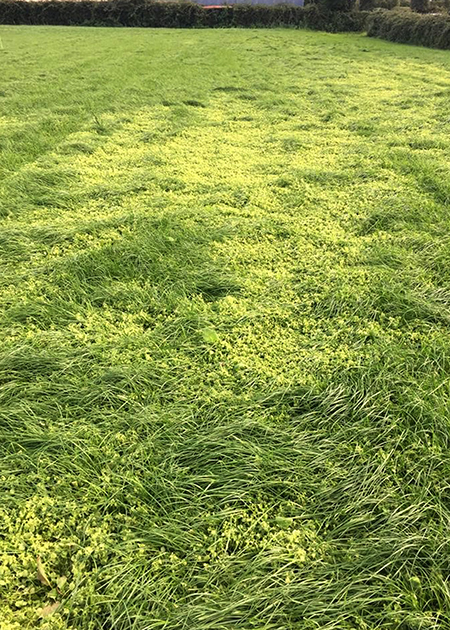
If not controlled early, chickweed can smother large parts of a new reseed.
Keeping new pastures clean
Pastures reseeded in recent weeks should be watched closely for weed infestation and weed control should be seen as an integral part of the reseeding programme.
If not controlled early, weeds such as chickweed and docks can devastate new swards. Pastor Trio is the ideal herbicide. As well as controlling chickweed, docks, thistles, dandelions, buttercups and plantains, it is also effective on annual weeds such as redshank, charlock, mayweed and fumitory.
It can be applied from the third leaf visible stage of the grass. The application rate on reseeded pasture is one litre/ha in 200l water.
More Articles …
Page 2 of 3


